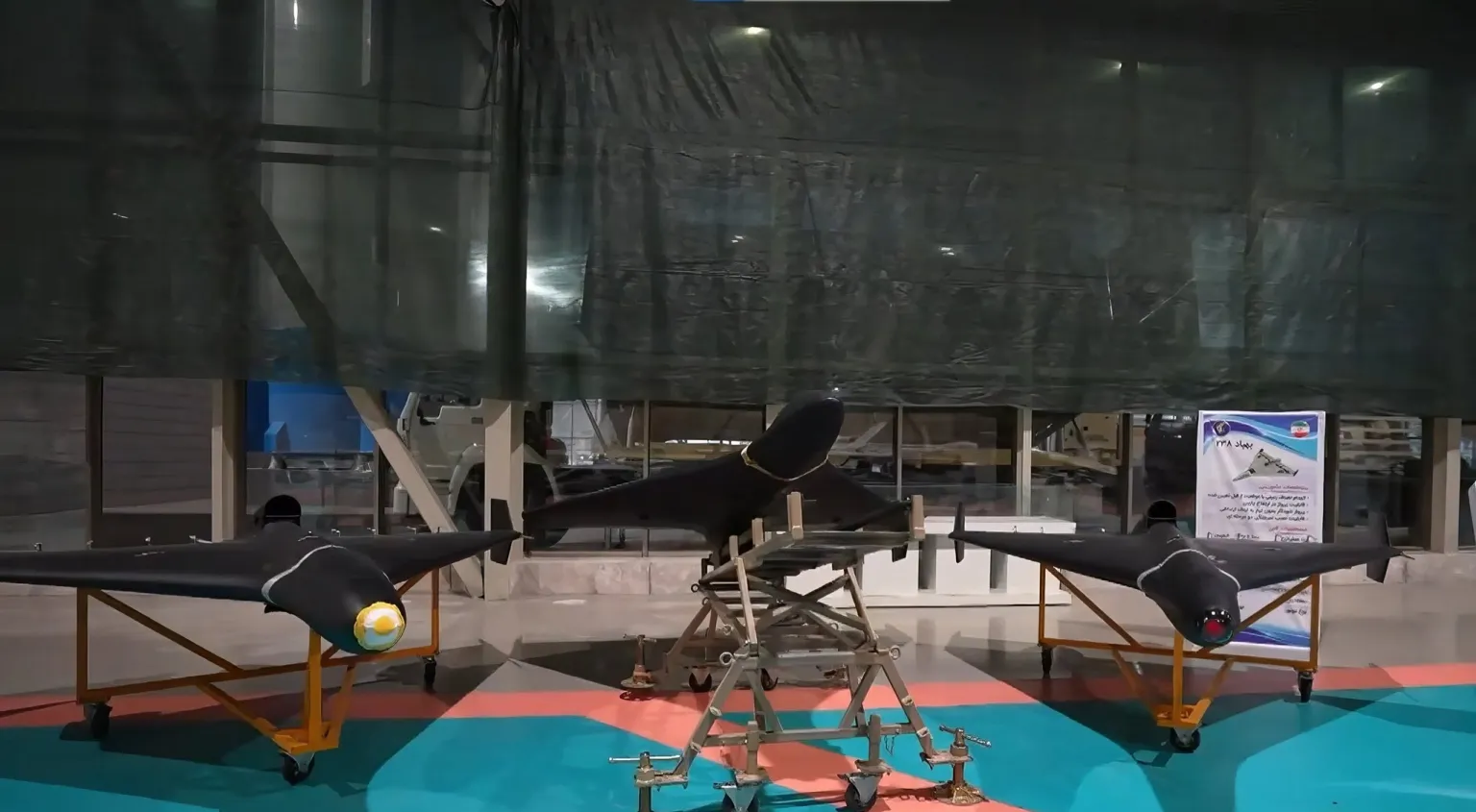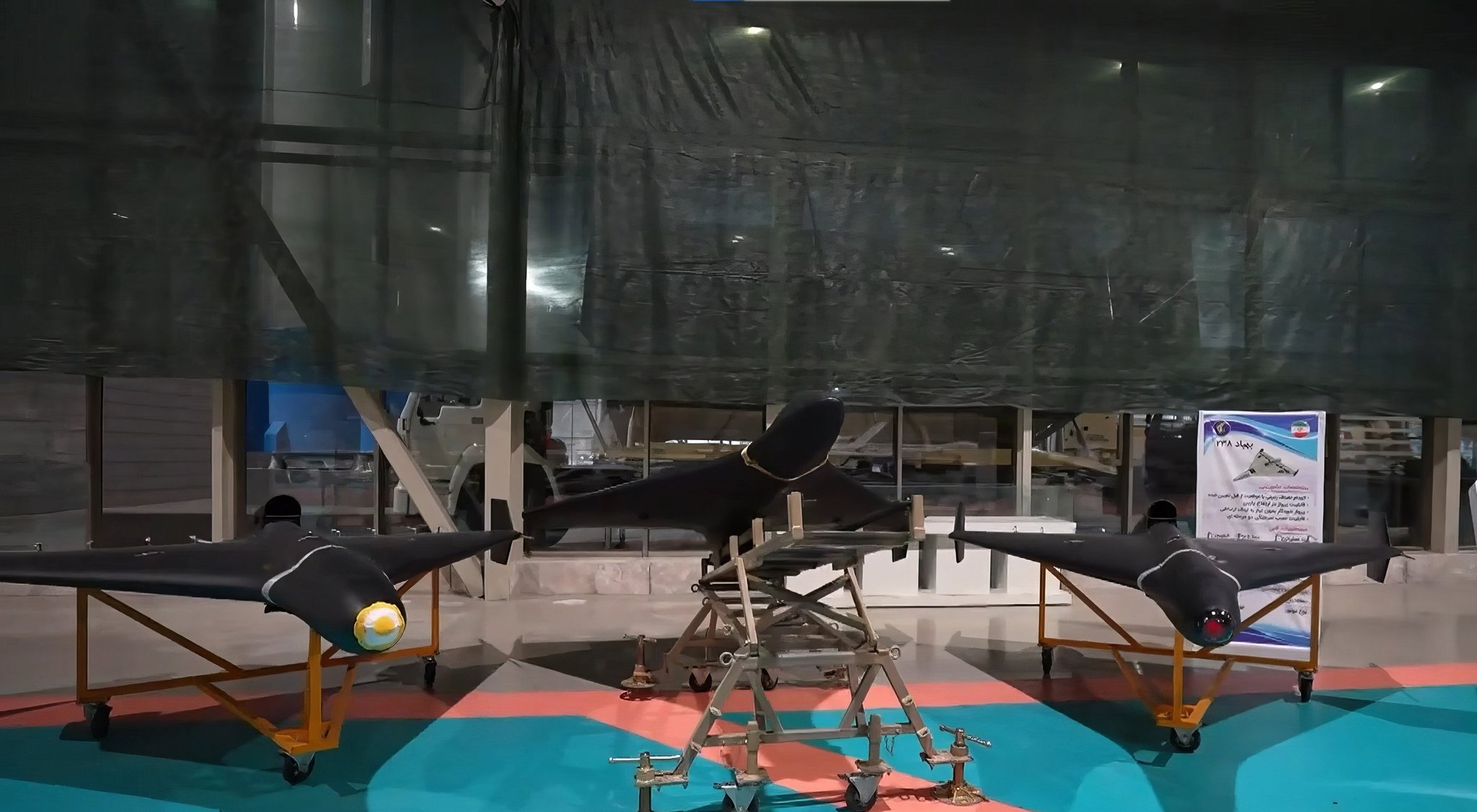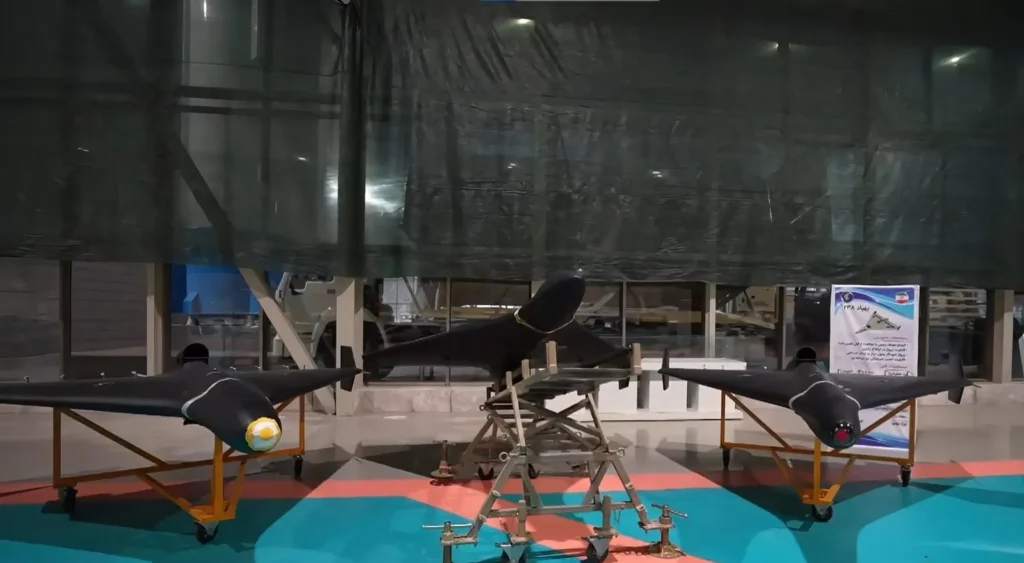
After the ‘resounding success’ of the Shahed-136 kamikaze drone in Ukraine, Iran has unveiled a jet-powered version of the popular loitering munition, the Shahed-238. Bearing the same design as its predecessor, the UAV has three sub-variants with different guidance and seeker systems.
While it is not known whether the drones have entered mass production in Iran, it won’t be long until that stage, given Tehran’s efforts to have a large and diverse inventory of UAVs. It would also be interesting to see if Russia adopts the jet engine feature on its Shahed-136 clone, the Geranium-2 (Geran-2).
Previous EurAsian Times reports quoting international publications noted how Russia had set up a dedicated drone factory in Alabuga to reproduce Iranian drones exclusively as a part of the burgeoning defense industrial ties between the two countries. But it is conceivable that the new jet-powered Shaheds will not have incorporated lessons from the ongoing Russia-Ukraine war.
Russian and Iranian drone factory engineers and managers had robust technical correspondence over the aircraft’s production, Western intelligence and satellite pictures showed. It would be unlikely that Iranian defense scientists will not have received first-hand feedback.
Three Variants Of Jet-Powered Shahed
Pictures posted on X showed three Shahed-238 drones with different front-end seekers. The drone at the far left had its nose section covered with a white sheet-like object, while the one in the middle was fully solid, and the last one had a glass section.
This means the third Shahed-238 has an electro-optical/infrared seeker. The one in the middle has none and flies to its target based on preset coordinates, guided by a combination of satellite navigation (SATNAV) or inertial navigation system (INS). The first sub-variant possibly has a radio frequency or a homing radar seeker head.

“Additionally, the drones are painted black to reduce visibility against the night sky, as the main Geran operations in Ukraine primarily occur during night time,” said the post by DD Geopolitics.
Interestingly, jet-powered advancements of the Shahed-136 can be considered only a logical progression after Iranian state media unveiled the version in late September. The original pusher-propeller drones were powered by the MD550 piston engine, producing a distinctive sound. The drone’s sound earned them the moniker “scooter.”
With a different rear section, the new drone was shown diving down and hitting a land target. What kind of turbojet engine powers the drone is unclear. Analysts, however, believe it could be a commercially available “hobby” engine sold to aviation and remote-controlled aircraft enthusiasts, with Iranian engineers possibly reverse engineering the simple power plant and mass producing it with their tweaks and modifications. However, precise information and the engine specifications remain unclear.
Another version of this earlier turbojet-powered Shahed-136 has an electro-optical turret ball under the nose. Handles analyzing Iranian military affairs observed this as very “uncommon,” saying Iranian loitering munitions usually have their EO/IR sensor embedded in the nose.
Referring to this drone, Iran Defense posted on November 13, saying this Shahed-136 “would serve as Iran’s high end, more expensive loitering munition, with jet engine & EO ball for locating targets.”
This has subsequently been designated as the Shahed-238, a new series of unmanned aerial platforms with variants and features.
Will It Have Western Components
It will also be interesting to see the extent of foreign and American components in the new drones, given stunning revelations over the last few months about how Western electronics continue to find their way into weapons made by heavily sanctioned countries.
A report in The Washington Post identified that nearly 90 percent of drone computer chips and electrical devices originated in the West and the US.
This includes 21 Texas Instruments-made sub-components inside its flight control unit; 13 components by the Massachusetts-based Analogue Devices in the drones’ major circuit boards; and an ‘accelerometer’ critical for the UAV to fly autonomously along a pre-programmed path in case satellite navigation is lost.
